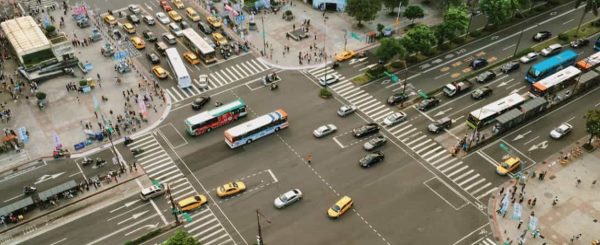
Since I was an intern at Image Sensing Systems working with the Autoscope in 1994, I thought our industry should be doing turning movement counts with computers instead of people. That’s why I was excited to be an early adopter of Miovision who promised automated turning movement counts. After working with Miovision for half a year, I figured out (1) they deliver accurate data, although we don’t know it’s truly automated and (2) they ate up my profit margin.
 So after 16+ years of daydreaming about portable camera systems (good things take time and yes I should get a life), I built my own little camera system, COUNTcam, which has now evolved to the more refined countCAM4. This is a reliable system that can be setup in about ten minutes at any intersection and record for up to five straight days!
So after 16+ years of daydreaming about portable camera systems (good things take time and yes I should get a life), I built my own little camera system, COUNTcam, which has now evolved to the more refined countCAM4. This is a reliable system that can be setup in about ten minutes at any intersection and record for up to five straight days!
(Thanks to Kimley-Horn who took the photo of our original system in action in Minneapolis way back in fall 2010).
So what about this post’s headline? Right around the time we were developing our first COUNTcam, TranSmart completed a corridor study of Highway 52 for MnDOT south of Rochester, MN. The initial scope called for about 50 tube counts and a.m./p.m. counts at 17 intersections. I brought up the idea of doing our 13 hour counts instead, which I thought would get them good data for their corridor study (giving data for peak hour analyses as well as traffic control warrant analyses) and we’d be able to do it significantly cheaper than the initially requested data.
MnDOT liked the idea of the turning movement counts, but 48 hours of data is their “standard.” We settled on a fair price for the 48 hour turning movement counts. Deploying people to do the same counts would be radically expensive, which is why they were originally thinking mechanical tube counts even though the data wouldn’t be as useful.
Our testing on the original COUNTcam showed we should have no problem recording 48 hours so of course I shot from the hip and said we could do it. Even though we hadn’t recorded anything longer than 24 hours for a project up until that point. Happily, it worked!
So then we went through a lot of hours of turning movement counts, which was made easier with the use of COUNTpro and COUNTpad 2, which allow us to toggle the video faster/slower while accurately counting (it still takes a person to do the counting, but this is a huge step forward from doing field counts with a jamar board).
These tools allowed us to accurately complete these counts at more than 5x real speed (the highway has 6000 cars a day and some of the cross streets have 300 cars a day – which would have been painfully slow at real speed).
